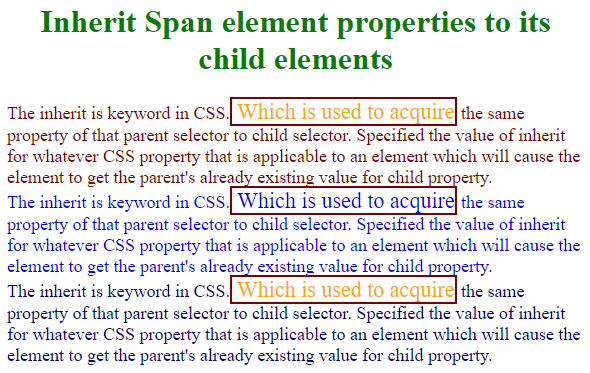
Only Inherited properties like font, text, color are passed to the child whereas other properties are limited to the element itself by default. Parent 1 has many layout properties but child 1 or child 2 don't get those properties. Structural properties are not inherited by default. Useful for alignment and text content styling. In the above demo, we have inherited property from the parent.


Parent: margin, padding, border,color,letter-spacing, word-spacing, text-align, text-shadow, cursor.The elements have the following properties: The below demo shows color, font, and text properties.įont: normal small-caps 16px/30px "monospace" Ĭlick on each text element to see an example of inherited properties in the box model. The above list of properties inherits the computed values from its parent. Use Inherit keyword to enable inheritance in any Non-Inherited properties.The child will inherit the properties of the parent only if the property type is Inherited Properties.Properties can be grouped into two categories when not defined. When no property is specified for the rule of the element. There is a list of properties that will get inherited values automatically.

The child will always inherit computed values from the properties of their parent. But no matter what kind of task it is, There is always some redundancy that we can remove and optimize the way we use selectors using inheritance when needed.ĬSS inheritance is a default functionality for some properties in the CSS cascading system. This hugely depends on the nature of the task you're doing. Have you ever gone too deep into creating CSS classes and nested selectors and assigned a large number of properties to each and every level of your rule?Ĭhances are yes you have done it.


 0 kommentar(er)
0 kommentar(er)
